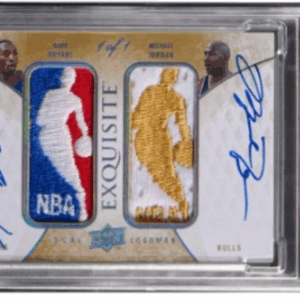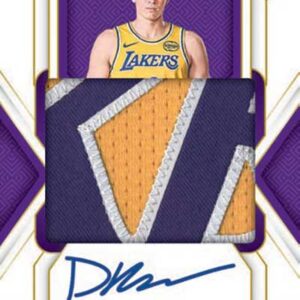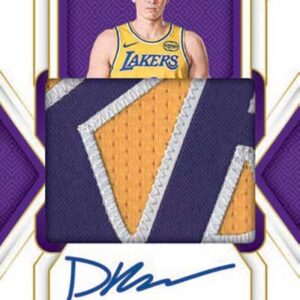The sports memorabilia universe buzzed with excitement as Jalen Hurts, fresh off his Super Bowl LIX MVP win, saw one of his most cherished rookie cards sell for a jaw-dropping $35,000. The card in question? A 2020 Panini Immaculate Collection 1/1 NFL Shield Auto, graded PSA 8/Auto 10, which had previously sold for $23,400 just over two years prior. This impressive 50% surge incites the tantalizing debate: has the market for Hurts’ cards peaked, or is this merely a delightful warm-up?
The electrifying performance on the grandest stage in American sports inevitably adds sparkle to any athlete’s market allure. Hurts’ heroics not only won him praise and an envious position among football’s elite but also ignited investor interest that recalibrated his card’s worth to new heights. Such a milestone invites scrutiny and speculation about the potential trajectory of his card’s valuation.
Delving into the drivers behind this leap, multiple factors spring forth with compelling narratives. A quarterback’s stock is historically interwoven with championship exploits. Super Bowl victories, especially consecrated with MVP honors, inject a sense of enduring potential into collectible markets. Investors astutely gaze toward Hurts, banking on a future adorned with more rings, inevitably speculating that this is not his summit.
Adding further to his allure, Hurts is now permanently etched in NFL chronicles with his Super Bowl MVP accolade. This gold standard triumph elevates his collectibility, situating him alongside iconic company — albeit still in the company’s antechambers compared to the likes of Patrick Mahomes or Tom Brady.
The current sports card market, albeit occasionally tumultuous, stands robust in its appeal to long-term investors. Modern athletes such as Hurts spearhead the attraction and further bolster the market’s integrative potential for growth. Yet, for this upswing in value to persist, Hurts must sustain elite on-field performance, requiring playoff depth and, ideally, a career ripe with achievements hinting at Hall of Fame candidacy.
This brings forth the essential contemplation for collectors and investors: to buy, hold, or sell. The NFL offseason brings its seasonal slumber to card values, prompting introspection.
A hypothetical BUY position banks on Hurts mirroring quarterbacks like Mahomes, who saw substantial card value spikes following continued success. Early investment might seem prudent before his potential further triumphs inflate his card’s worth yet again.
Conversely, the SELL stance might appeal to those eyeing the current hype as an exit point to cash in on the Super Bowl wave, wary of any offseason valuation dips.
Lastly, adopting a HOLD strategy assumes a long-haul perspective, envisaging another round of successes pushing values skyward, should Hurts’ career trajectory remain stellar.
These decisions aren’t merely game-day calls but strategic positions in an ever-evolving sports card market runway. High-end 1/1 rookie cards like the discussed NFL Shield Auto don’t commonly exchange hands, rendering long-term market trends speculative at best.
Assessing market peaks involves not just the glitz of immediate successes but also the strategic foresight into an athlete’s forthcoming journey. With Hurts capturing both a Super Bowl and an MVP accolade this calendar season, his stock sails confidently. However, whether this recent $35,000 benchmark is a step toward grander horizons or the ceiling for now remains under the scrutiny of astute market watchers and impassioned fans alike. As the offseason dawns, the durability of Hurts’ card values jitters with excitement—a mystery to unravel as the seasons change and Hurts’ story continues to unfold on and off the field.






